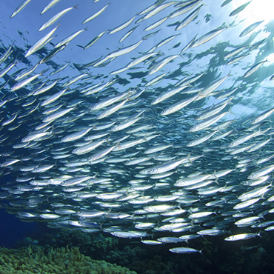
The primary aim of the Fisheries Management Challenge was to assess whether the data currently available from national and international organisations from the 11 relevant countries in the North Sea (UK, Sweden, Ireland, the Faroe Islands, Norway, France, Finland, Belgium, Denmark, the Netherlands, and Germany) are sufficient to describe the extent of fisheries activities and their impact on the North Sea environment. A further aim of the challenge was to determine the accessibility of fisheries data by end users.
Data were gathered from a range of sources as follows:
International sources | National sources |
|---|---|
EC JRC data; | UK: MMO landings data, Environment Agency Geostore, Marine Scotland data portal; |
ICES, catch and stock assessment datasets and fishing activity datasets; | Germany: Federal Office for Agriculture and Food (Bundesanstalt für Landwirtschaft und Ernährung – BLE) fisheries landings data; |
EMODnet Portals; | Belgium: Department of Agriculture and Fisheries (Vlaanderen Landbouw and Visserij) Sea Fisheries Publications; |
Food and Agricultural Organisation (FAO) capture production database; | France: Ifremer and Obsmer fishing fleet data; Norway: Norwegian Directorate of Fisheries fisheries data; Sweden: Swedish Agency Marine and Water Management (Hav och vatten) fisheries data; Ireland: Sea Fisheries Protection Authority (SFPA) fisheries data; The Netherlands: LEI research institute (at Wageningen University and Research Centre – WUR) Agrimate fisheries data; Denmark: Danish Nature Agency (Naturstyrelsen) Agrifish datasets |
Generally there is a significant amount of fisheries landings and effort data provided on various national fisheries websites, but they are often in PDF format, embedded in reports, only for restricted time series, not grouped in the same way between countries and only viewable on interactive web maps. With the datasets available for this challenge, only fine resolution mapping and analysis of fisheries data can be done on a national, but currently not basin-wide level.
The assessment of whether the data is in a format that is easily accessed and understandable by an end user determined that in some cases specialist knowledge of software e.g. GIS mapping tools, would be needed to perform the required analyses of the data. It was also determined that some data required a significant amount of processing and guidance from the JRC to manipulate correctly for the challenge. Without the key contacts and understanding of the data this would have been difficult to carry out.
There can also be significant costs associated with obtaining the fishing data from National agencies in a format which can be used.
Overall, the challenge was partially successful, updated maps of the fishing effort in the North Sea were produced and spatial and temporal analyses of trends were possible but only due to the international data which was freely obtainable. There are gaps in the data, most particularly at a national level, with regards to fisheries discards, by-catch and spatial activity which could make development of fisheries management plans challenging. The full assessments carried out and the results of the challenge are presented in the Final Project Report.
